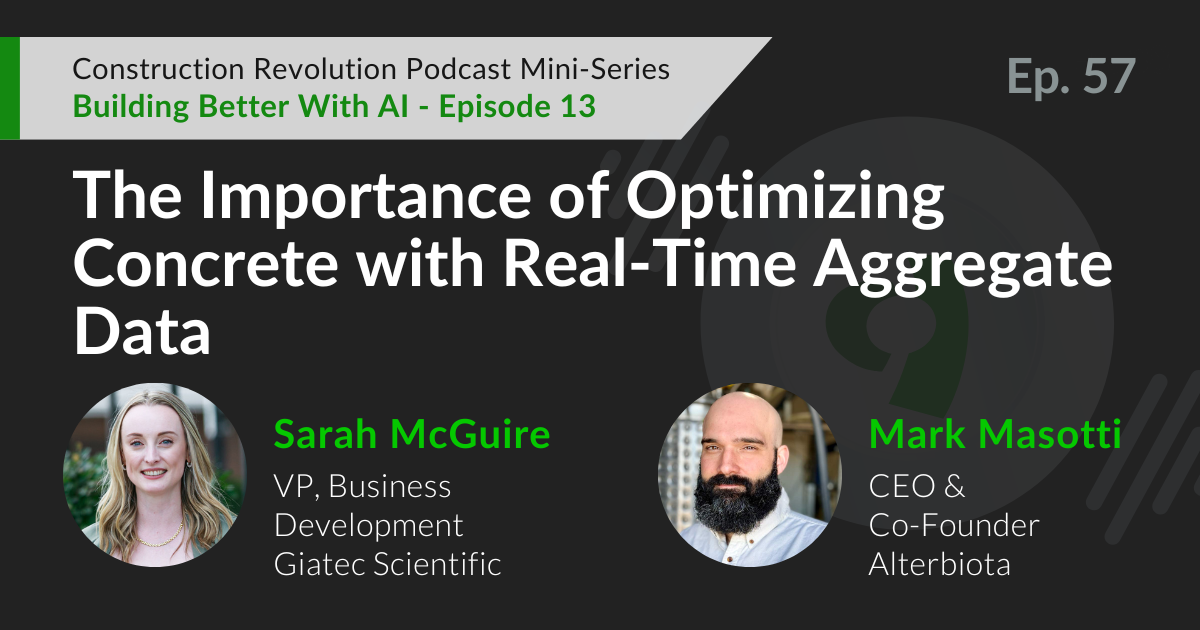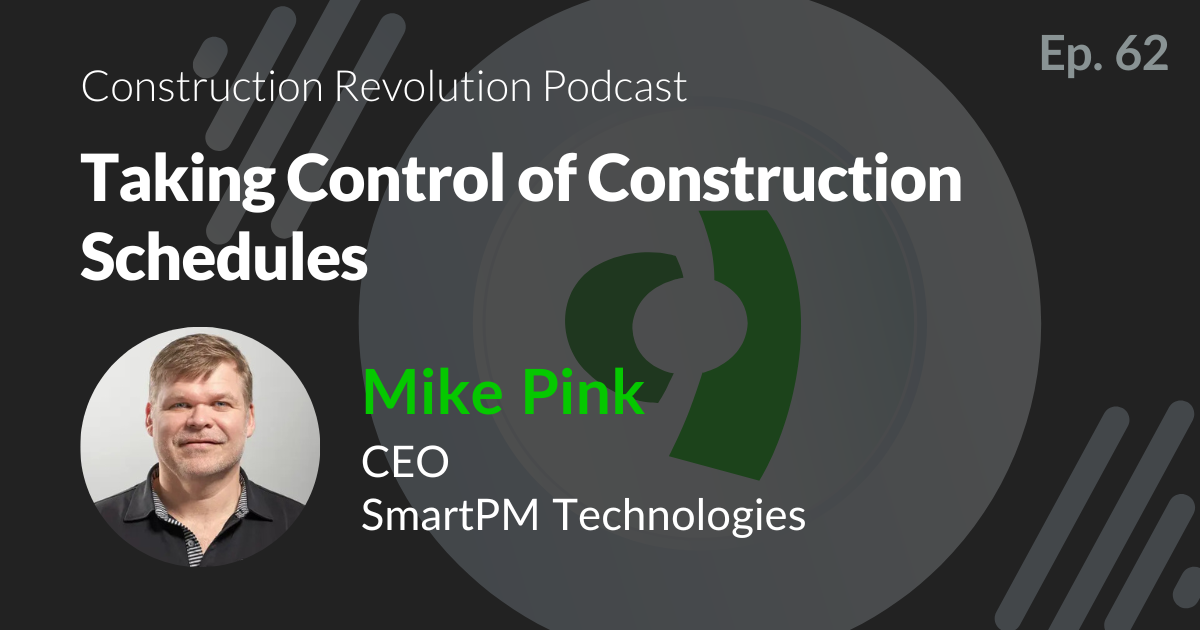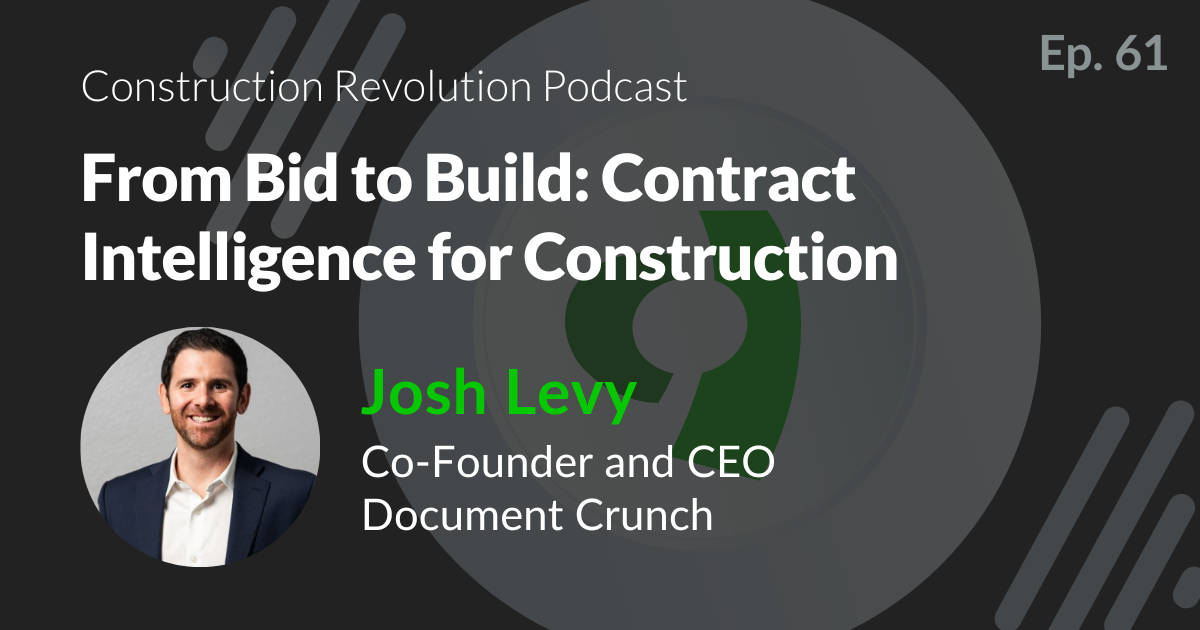
Episode 58 |
August 7, 2025
Unveiling the Subsurface Network with 4M Analytics
Subscribe to the Construction Revolution Podcast on Your Favorite Platform:
In This Episode
In Giatec’s new episode of The Construction Revolution Podcast, we welcome Itzik Malka, Co-Founder and CEO of 4M Analytics, a company on a mission to map the underground world and prevent costly utility strikes. Itzik shares how 4M is using cutting-edge AI and geospatial data to create the world’s first comprehensive map of underground utilities—empowering civil engineers, contractors, and project owners with the information they need before they ever break ground. We explore how lack of visibility into subsurface infrastructure leads to massive project delays, budget overruns, and safety hazards—and how 4M’s platform is turning that chaos into clarity. Itzik also walks us through the impact of underground mapping on sustainable planning, smart cities, and the future of infrastructure development. Tune in to discover how subsurface intelligence is becoming an essential tool in modern construction—and how 4M Analytics is redefining how we build from the ground down.
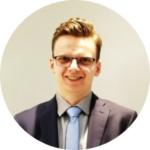
Host
Steven Rossi
Marketing & Events Lead, Giatec Scientific Inc
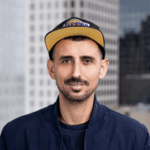
Guest
Itzik Malka
Co-Founder and CEO of 4M Analytics
Podcast Transcript
Steven Rossi
Hello there and welcome to the Construction Revolution podcast. My name is Stephen Rossi and here on the show we explore the latest trends, technologies, people, and organizations that are revolutionizing or disrupting the construction industry and are changing what the industry will look like tomorrow. Today we welcome Itzik Malka, the CEO and co-founder of 4M Analytics, a company revolutionizing subsurface mapping through AI and remote sensing technologies.
Their mission is to make underground infrastructure visible and accessible to everyone, helping construction and infrastructure teams avoid costly delays, safety risks, and planning errors. Join us as we explore how 4M Analytics is harnessing the power of AI and utility locators to provide vast utility data in real time to all project stakeholders, driving smarter, faster, and more efficient construction.
Hi, Itzik, Welcome to the Construction Revolution podcast. How are you doing today?
Itzik Malka
Good, good to be here today, Steven. Thanks for hosting me. Happy to be here.
Steven Rossi
That is great. Yeah. I am excited to learn more about you and about 4M Analytics and your journey into construction. So why don’t we get started with that and you can tell me how you founded 4M Analytics and what inspired the idea for the company?
Itzik Malka
Absolutely. Yes. You know, if I would take one word that describes my journey, mine, and 4M’s journey it is serendipitous. I think everything I did in my life led me to the opportunity in front of me. And I am grateful for it. I came to the U.S. three years ago. I served 10 years in the military, special forces, and trained to deal with explosives. And I just wanted to do something good back with my expertise, back to humanity.
So, I took my expertise being part of the squad and thought I am going to apply that expertise to the civil domain humanitarian aid and help post-conflict regions to remove explosive remnants of war. That is how we started the company. I started the 4M defense, which the name stands for, my other company, which to date, is the biggest company in that space in Israel. And my aim was to go global and go to those post-conflict regions.
Part of my journey of, you know, it is almost been 10, 11 years after I ended like the military service, I thought, you know, always to find better ways to dispatch people, to use applications, all kinds of very sophisticated machinery like excavators with autonomous kits, prime movers that are remote controlled and all kinds of attachments. And I realized that what I should really do is to build a map that enables me to predict the locations of those buried hazards.
And I did. I thought I am going to take like a, I am going to utilize sources and mostly imagery, and I am going to try to superposition them in a comprehensive way to try to predict the past by the changes that occurs on the ability to go and do time-lapsing with imagery. And that is what I did. And I got a really compelling success correlation between the system prediction to the action my location uncovered.
And I said to my co-founder, both of us construction guys, I am going to build it in a tech manner. I am going to have like a tech company. Do you want to join me? So, what do we have to do with tech? We are two guys that know how to operate a really complex environment with excavators, wheel loaders, dumpers, you know, crashers, screeners, really complicated environments. What do we have to do with building a software? I said, we are going to figure this out. So, but I am going to do it. If you want to join, join. If you don’t, I am going to do it either way. So he joined.
And I went to raise capital, not before I realized that I need to have a white paper that really describes the innovation. And I got every possible no. So, I did what every person who doesn’t know has been doing back then before the OpenAI and the Gen.AI. I went to Google and asked, what can I do with technology that could see beneath the ground? And I found Jim Anspach. He is the godfather of a market called Subsurface Utility Engineering. It is a common practice. But that was a lecture that he made in 2011. I found it in 2018, 2019, I think close. And I realized that he describes a process of four stages of any time that somebody wants to plan, design or build on, you know, and needs to break a ground.
A full stage process that starts with records research. You need to reach out to submit tickets through the 811 system and then reach out to the utility owners. If they are willing to show something, they are to give you something that is incompatible. You are going to have many blueprints together like set on a desk and you have to do some kind of manual amalgamation on your head, and you have to be a pre-qualified engineer to do so. And there are quality levels to each one of them.
And then you have to send people to the field with surveying teams that needs to trace their own surface features that indicates that something is buried like valves, pedestals, hydrants, manholes, communication manholes, streetlight poles and electric poles. And that was crazy to me. And then you have to send geophysical teams with ground penetration radars and magnetic sensors to find the X and Y and then vacuum excavation trucks. And then an engineer will come after you have X, Y and Z, and will recommend what is the best cost effective, less risky route for your new construction.
I was amazed. No one centralized a database and an interface that could look like and feel like Google maps. And it struck me. I realized I am about to build, about to discover the network of all networks that runs beneath the ground. And it is going to be some sort of Google maps, but for the subsurface. I realized also that the many no’s I got, some of the kindest ones gave me the why no. And one of them said to me, you have to go and read the five T’s of investability, the five T’s investability thesis.
And I went and I read and it like speaks about like the term, what is the size of the problem you want to solve? What is the technology you have? Why are you and the team equipped and related to that problem space, and you have the advantage and experience to do so. Why now? The timing. Show me the traction of somebody who’s using it or willing to use it; it is going to be ready. And then show me the 10x factor. And I said, it is going to Google Maps.
We are going to go to pre-construction. We are going to give data for the early planning phases within linear construction for any project engineers and any professional service provider that needs to be educated before we design, plan, bid estimate, coordinate in some sorts, and eventually execute and maintain, maintenance, and maintain those corridors. And I realized that this is going to be like a really, really significant impactful product.
And I went with that story and raised 45 million just for the ambitious mission of building Google Maps of the subsurface in all regards to the, you know, what was once the emptiest space on earth and now has become complicated. are going to discover it is pretty much as Lewis and Clark discovered, you know, the US.
Steven Rossi
Nice. Yeah, that is it. That is a great story. And you can see how passionate you are about it. It is cool how you went through that journey. So, I am going to skip ahead a little bit because you touched on some of my other questions. So, as you mentioned, collecting all this data from all these different sources and aggregating them into one, I imagine that was a big challenge, given that was also no one had ever done this before.
How did you go about doing that? And how do you ensure that the data that you do get is quality data and also accurate and up to date? Because those things can change a lot.
Itzik Malka
Yeah, here I used my experience of being part of a construction ecosystem. I was always using those blueprints in my other company. Anytime that we wanted to design something and anytime they wanted to get paid, that was the SBIL. So, I knew there was this connection, an inherent disconnection between the state of what could be designed to what is actually being implemented.
It is a fragmented industry, but eventually it is a fragmented process that you have many parties, many workflows, most of them are not digitized, but you have some deliverables that you could use. For instance, blueprints, for instance, imagery that people are using like drones, aerial satellites, and eventually geosurvers. And I said, what if we are going to concentrate on those three legacy sources?
And this was an assumption that said; I believe the network relates to the federal highway system. And this is a public space. What if I am going to go and try to collect those legacy sources within that federal highway system? I think it is going to represent 80 to 90% of what I need as a starting point. And that was correct. That was right.
And now it is not about like, we have access to the data? We do have access to the data, but because most of it is publicly available. And secondly, I think, do we have the infrastructure to really collect with cleansing and vetting and scoring? Do we have the ability to amalgamate? That is the conflation, collection to conflation. What do you do in places where you have no coverage and less coverage?
So here comes the blueprints geo-tagging, the ability to find the blueprint but also relates the blueprint to its physical location in accuracy or precision of less than 10 feet off. But now that you have a blueprint, can you digitize it? the digitization aspect of it. And once you have everything together, on top of it, you have image science capabilities. I want to see everything that I am talking about. So, it is a constellation of and revisits of many sorts of imagery with the ability to go backwards and do time-lapsing. And that was giving us like the ability to verify the foundry that we got from the conflation. And now you have the retention aspect. So, this is kind of the process. It sounds simple to understand, but it is a very, very, very complex process and a very complicated problem space.
And I am really, really proud that I got the money, found the best team ever, really diverse from many divisions that helped me to really meet my only principle remaining from the very early days. It is going to be no boots, software play, SAS base, AI first and vertically integrated because I knew, I felt like it is too big to really perceive its value. Even today as a CEO, I feel that it is a crystal ball for future resiliency, for future development, and the number of applications that could benefit the public is enormous.
Steven Rossi
Yeah, for sure. And so, to build off that, like you mentioned, like the whole thing, is kind of to give people access to this data. And there’s so many, I can imagine so many companies and so many different stakeholders in those companies that would be interested in this. So, what is sort of your main target market? And then also like who are the actual end users of 4M Analytics?
Itzik Malka
Here is also part of the go-to-market strategy that we had, strategy now, but the beginning of it. We said, okay, we are building data that used to be created by sending people to the field with sensors. Now it is a software. I need to convince people to use a digital deliverable that is ready to use versus to send somebody to the field. And you are talking about like a really risky environment. People don’t want to use something that could risk teams and people.
So, I said, I am not going to talk about accuracy. I am going to try to get to a good enough metric. And to me, good enough was really challenging because if you are talking with Jim Anspach about good enough early days, he was kind of saying to me, there’s nothing close to good enough in our industry. It needs to be very precise, very accurate. But I said to him, I challenged him, I said to him, Jim, that was right only if you have substance to use. If you do not have substance, it is only an argument without the ability to determine.
I want to be the substance. If I am going to convince people that there is a good enough that you could use in places, there is no any availability or accessibility to data, and you are going to use it to do the feasibility studies, the early planning, the bidding, the estimating, and it is going to be good enough for that use case. I think it is going to impact the value chain, also the design and construction, and also the post-construction because it is going to help you and give you more time before construction starts and before the kickoff. And once the construction is kicked, I think the monster needs to be fed. So, you are playing like a different game.
You are bleeding money every day that there is a delay in the schedule. So, I said, I am going to go to engineers and test the hypothesis around good enough. And it is going to be an early planning phase, an early engineering phase, I would say. And so, we did, we got like, it is not good, it is not good, its crappy, it is this and that. And we used that feedback to really reiterate, to get to the good enough and also to define what is good enough means.
That also was a challenge at the beginning because you have no substance and no standard. And then based on the feedback we got and the customers that trusted us, we thought now it is the time to go to the owner. So, it is the designer and builder. Now we should go to the speak with the owner. And so, we did. And we said like the owner of the public domain, the right of way is the DOT. It is also like the MTAs and now, metropolises, like big counties and then Munis.
So, so I said, it is going to be transportation. That is the space. And we are going to start with DOTs, and we are going to help DOTs first, you know, to decide, to do the feasibility, the NEPA study. And I think we are going to help them to bid, we are going to help them with like more precise procurement of professional services. And we are going to be the system of records, you know, connecting between the state of what could be designed to what is actually being implemented.
We are to give them a portfolio outlook. So, we have built upon the data products of, you know, route planning, conflict metrics, transportation planning, and we have a backlog of products that we could build to that space. And now we have the designer, the builder, and the owner. And now we go into another one. It is the resident within the right of way. It is the utility’s owner.
So effectively, you are going to find within one junction in the city of Austin, a utility upgrade over Watermain. It is going to be owned by the city of Austin. The funding partner is going to be Travis County, where I live. You are going to have Texas DOT as the oversight agency. They are going to speak with 20, Stantec, AECOM, Jacobs for the design phase, and they are going to hire 10 to 20 subcontractors, designators, locators, excavators, operators, etc.
Construction will also be, I would say, the walls, the granites, the key weeds, these guys. And one of them will be selected, the mass stack. One of them will be selected for the construction phase and implementation phase. And then they are to hire a few 10 to 20 or more subcontractors. And they are going to have to speak with 30 plus utility owners in that junction.
And if you go to think about like the actuary side of it, every one of the entities probably needs to have an insurance that is going to be three, two to four percent of the total project cost. And there is no ability to really determine the profile of a risk, the consequences to meet the risk. So, what do you do about actuary?
Effectively, you have 40 to 50 potential paying customers on one project. Do you know how many projects there are in the US per day? 169,000 projects per day. That is the 10. It is really an enormous 10 for 4M. And that is why it is such an ambitious mission to serve that 10. And you really need to be a domain expert to understand…
Who is the customer that you want to serve? What are his desires? And you need to give him desires that he did not think of because he did not know that technology exists. And eventually if you revisit our mission, it is not about the incumbents. It is not about replacing or reducing significantly, eliminating the location, or sending people to the field. Yes, it is the connection between the field to the office, but it is the ability to build faster, safer, and better together. It is the collaboration, it is the coordination, it is the risk mitigation together. That is my mission. That is our mission.
Steven Rossi
Yeah, that is a great mission. I mean, that is very similar to what we do at Giatec. Like our mission is pretty similar as well. And I think the way you broke it down, sort of like everyone involved in a project like that, is super, super interesting. So, can you share a success story from a construction project or company that you are working with and how they used it?
Itzik Malka
Yeah, yeah, definitely. So, I think we have many, every one of them is like, most of them is in our website with testimonials from the customer itself. But if I will pick one, it is going to be Mastek and I am picking Mastek because it is like an underground in electrical cables, like it is the key for resilience in water disaster and ensuring customers really enjoy reliable service. In 2024, when we started the conversations with Mastek and they trusted us to give us like a chance, we enabled Mastek to serve their customers. And we did 90 projects in two months compared to nine months that they used to spend to do 80 projects in 2023.
And I am not talking about just kind of what we shaved in terms of the money. If you ask me what is the most meaningful factor in construction, it is the time. Because you have all kinds of avenues to meet the schedule, even with a greater budget. Like that is why you have the change orders, for instance. You want to use that to really pace and meet the schedule because at the end of the day, the public needs to get more safe roads to use and like drinking water to use and sewer systems and broadband to use like fast internet. And we here, all of us, to secure the continuity and resiliency.
And what I liked about the process is not just the money, it is about the ROI around the time, around the permitting processes that they have. And 4M could be a really strong avenue in taking, if I am giving you, for instance, you need to cross private property. You need to understand like what is the, you know, what is the infrastructure that you are to deal with outside the right of way. This tends to be the one that needs to get an easement. But to get an easement, you need to understand like who is the property owner. And if it is commercial, it is going to take you to from one month or a few weeks to many months because you have to meet every one of the owners of a building to get his signature, to get the easement.
So, if I am giving you the names, I am giving you the platform to really reach out to them and get the easement instead of going to many other systems to do the easement. I am saving you much, much of not just the time, but also frustration. But at the end of the day, it is the time that I like to talk about this. So that is what we did to Mastek. And they started the permitting early. They got the permit in hand, and they were ready earlier than ever before. And that is why they gave us the trust and that is why they are, you know, delightful customers today.
Steven Rossi
Yeah, that is a great story. mean, time is in construction is everything, especially like even before the project, but during as well. And like you said, at the end of the day, we just want everyone to be able to use what we are building as soon as possible. So, you touched on this a little bit earlier, often and like using AI and being sort of an AI first company, especially in construction and utility work where a lot of this has been
Itzik Malka
Yeah, yeah, exactly.
Steven Rossi
traditionally manual and very hands-on and so time consuming. How does implementing 4M and that, how do you see those people’s jobs sort of evolving by using that as opposed to just strictly being replaced?
Itzik Malka
Yeah, I think if you are talking about construction, a customer told me yesterday that they bucket the use of AI in three pillars. The first one is the back-office productivity in the back office. The second one is the good enough capabilities that could drive percentage of the workflow that they have and the point solution or any precision that they could use using AI.
I would put 4M in bucket two and three, because I think the good enough approach is like enables you to really pace the processes. And three, it is like the precision that you get, and it is a precision based upon cloud wisdom because we see the network. And once you see the network and you see the features on that network, you see everything. You could really determine the profile of a risk and the consequences to that risk and what it is got an impact on your schedule and forecast.
And at the end of the day, like the ability to see really the impact on safety and profitability even. I think AI is a really tremendous opportunity for those three buckets, but it also poses risks if you are not, you know, putting them and able to determine which technology refers to good enough, high precision or productivity play in the back office. I think AI is going to be in construction very, very significant. And I see the receptiveness of customers, AAC customers and public sector customers that set the objectives for 25, 26 and on using AI capabilities in a really good manner.
We need to also understand that AI relies on data, and it poses risks if it is taking you to hallucinations and you cannot really design a bridge by AI applications. It is something that there is like a threshold that is going to be very tough to meet because of the safety and stability of that bridge. I do not see anybody take AI engine and use that to determine the stability and strength of that specific bridge. I do not see it happening in the next couple of years because of that risk. But if you really refer into the good enough area, I think there is much to accomplish there that could pace everything, including the materials, including procurement, including professional services, including like really giving the starting point for people that really is going to impact the value chain ahead of them.
Yeah, so I think 2036 in construction is supposed to be the year that you go from 12 trillion to somewhere to 23, 24 trillion. And you are going to miss 52% of the engineering workforce that you have today. Think about it. It is crazy, crazy. And I think AI, than anything, more than anything, is going to help to solve the capacity challenge in front of us.
And we, I do not see AI threatening any human, only the ones that are not really using it.
Steven Rossi
Yeah, yeah, for sure. I think that is a great point. mean, I think everyone is aware of the labor shortage in the industry. And yeah, I think you got to embrace AI and figure out how you can use it to improve what you are doing as opposed to just sort of staying behind and trying to do it the traditional way.
Itzik Malka
At 4M, we divided it into the core data, that is our core product, the workflows, and integrations, and the agentic. We are building agents for basically anything you want in construction, but we have the data to rely on. Without the data, the play of agentic is like it is not strong enough and it could pose a risk to the organization. Because the data is our core, the data would give us the trust of our customers.
Even though it is instantly available, it is not even the time to click and get the data; it is the value of really perceiving it and realizing it and using it in their workflows. So, you take in my data and use it as part of the workflow that you do with the Bentley systems or the Autodesk systems or the Esri systems or you name it. And I think that if you are looking at it from three perspectives, also pricing, you refer to the call integrations and workflows, and then the agentic, which is similar to OpenAI and pricing structure.
Steven Rossi
Right. So yeah, you mentioned things like that you are working on. Is there anything else, like, I guess how do you see 4M sort of growing and evolving over the next five to 10 years as we move towards 2036? Are there any new features or products that you are already working on or, and yeah, how do you see it evolving longer term?
Itzik Malka
Yeah, most of our resources go to the data mental model. So yeah, AI generation is we calling it like a line generation. So, it is the ability to, if now I mentioned that we took the legacy sources, and we created a foundry by just superposition them together and like geo referencing them on the physical location.
Now I am talking about the puristic lines that come from our engine without any documentation that supports that they exist. It is just the engine that become with critical mass of knowledge are able to utilize the image science to really attach hydrants into one network and to say this is the network, this is where it starts, this is where it ends and to do the same with other sectors.
So, AI line generation definitely is one of them. The route concept planning and route planning, and transportation planning are another avenue. The utility insights, it is really many insights that in the portfolio outlook that they are giving you to see like, think about like a DOT that has 7,000 projects in the next 10 years. Now, all of them are readily available and it could cross and check and verify and could run LLMs on it in any aspect he wants. He could see like there is the same project with the same budget, but there is no connection to the same risk profile. So how come you have the same budget? You get to decide what is the most probable to be on time, less complex. It is like, think about it like on a spice meter standpoint.
We are giving you like the level of complexity you are to have to deal with, and now the ability to really mitigate it and not really transfer the risk to somebody else like construction tends to be. Yeah, I think it is really, and you know the beauty of it, and I assume like 90 % of the upcoming products that we are going to build upon the data are going to be designed with and through the engagement that we have with our customers. So, it is a really exciting time for anybody that has that kind of pace and that kind of mode. I like to say that 4M is the plumbers that come with the water.
Steven Rossi
Yeah, that is a good analogy. I mean, that is the best way to evolve, it is listening to what your customers are looking for and working through them. o, as we sort of wrap up here, if anyone is interested in learning more and getting started with 4M analytics, where should they go and what does that initial process look like?
Itzik Malka
So, I am really approachable. I like to learn and speak with people. So, anybody who wants to brainstorm, wants to talk about his challenges, wants to know more about us, please reach out to me through LinkedIn and through my email. It is Itzik@4M-a.com. And I would be happy to talk with anybody within that space that I could help too or he could really educate me more.
I really like to learn from people. And through our website or our team, it is really approachable. And our product is really friendly to anybody who wants to use it. So also reach out and we are going to give you access to the product to test it and really try to perceive its value to your organization and to support your workflows or any challenge that you may have that we may be useful for.
Steven Rossi
Perfect. All right. Well, thank you so much again for your time and your insights. And I am excited to see how 4M continues to evolve.
Itzik Malka
Thank you. Thanks for having me.
Other Related Episodes
Episode 63 |
December 18, 2025
The Importance of Optimizing Concrete with Real-Time Aggregate Data
In this episode of Building Better with AI, host Sarah McGuire welcomes Mark Masotti, CEO and Co-Founder of alterBiota, for a deep dive into how real-time aggregate data is changing the way concrete is optimized. Together, they explore why aggregates, despite making up 70–80% of concrete, have long been overlooked in quality control and optimization strategies, and how that gap limits the full potential of AI in ready-mix operations.
The conversation covers the shift from traditional sieve testing to digital aggregate imaging through alterBiota’s digitalAggregate technology, the role of standardization in driving industry-wide adoption, and how practical, ROI-driven sustainability can accelerate decarbonization without adding risk. They also discuss how real-time aggregate data strengthens AI-powered platforms like Giatec SmartMix, enabling more precise, data-driven decisions at the batch level. From enabling real-time optimization to improving confidence in material changes, Mark shares why precision is the concrete vision, and how better data at the source is paving the way for smarter, more resilient concrete production.
PLAY
Episode 62 |
November 20, 2025
Taking Control of Construction Schedules
In this episode of The Construction Revolution Podcast, we’re joined by Mike Pink, CEO of SmartPM Technologies. Mike shares insights from two decades of consulting experience, explaining why schedule mismanagement is one of the industry’s most persistent challenges and how SmartPM brings clarity, accountability, and early risk detection through AI-driven analysis. We explore how SmartPM enhances visibility and understanding of the construction schedule to help contractors and owners understand project performance, prevent delays, and make better decisions throughout the construction lifecycle.
PLAY
Episode 61 |
October 16, 2025
From Bid to Build: Contract Intelligence for Construction
In Giatec’s episode of The Construction Revolution Podcast, we’re joined by Josh Levy, CEO from Document Crunch. We explore how contract intelligence helps contractors and trade partners simplify complex documents, standardize risk reviews, and make faster decisions from bid through preconstruction and active construction. Josh explains why inconsistent documents and weak administration drive most disputes, and how AI can deliver real-time guidance to field teams to prevent issues before they escalate. We also discuss Document Crunch’s growing dataset, recent gains in specification analysis, and a roadmap toward proactive, transparent risk management that strengthens relationships across owners, GCs, trades, designers, and insurers.
PLAY
Want to Be a Guest Speaker, Sponsor, or Just Have a Question for Us? Fill In the Form!

